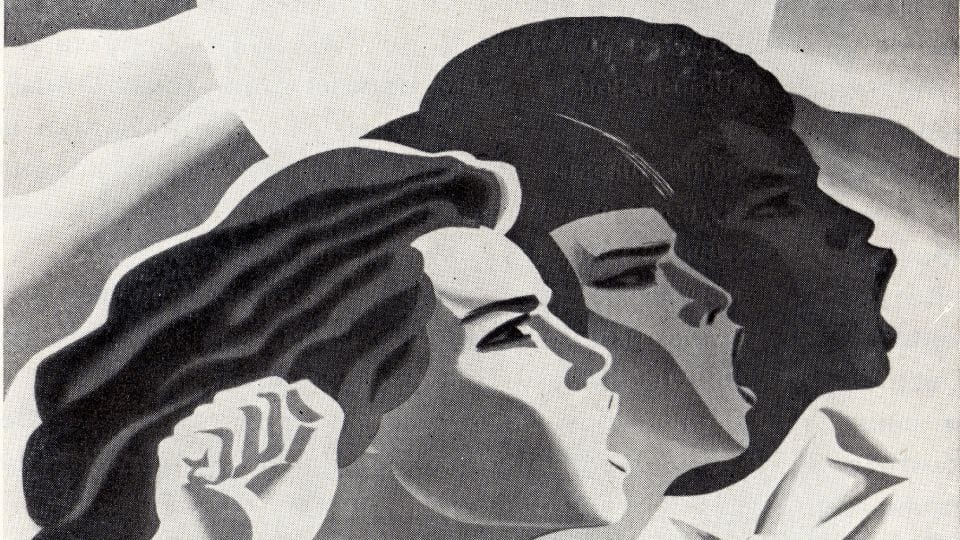The highlight of the Red Africa season, Things Fall Apart at Calvert 22 features artists, filmmakers and groups from across Africa, Asia, Europe and North America. Drawing on film, photography, propaganda, and public art, the exhibition presents interdisciplinary reflections on African connections to the Soviet Union and related countries. Curated by Mark Nash, the show gathers the responses of contemporary artists to different aspects of Soviet and related nations’ interests in Africa, particularly focused on ambitions to influence the development of political structures through film and art. The exhibition reaches back to the beginning of the Soviet era through the work of Russian-American artist Yevgeniy Fiks. Fiks explores representations of black people in Soviet press and propaganda as early as 1920, which he presents through The Wayland Rudd Archive. The exhibition also re-examines relationships built during the height of the Cold War, including Tito’s 1961 visit to Africa. We speak to Fiks about the exhibition.
A: Your work interrogates the cultural memory of the Cold War, what would you say are the biggest misconceptions of this period?
YF: One of the biggest misconceptions is that the Cold War was located only in the realm of mass media and that it was essentially a media war, devoid of tangible lived experiences and real casualties and victims. Of course, the Cold War is not just Hollywood and spy novels. It was something that was deeply ingrained into the very fabric of everydayness, pretty much everywhere on the globe. It single-handedly defined the second half of the 20th century and arguably is still defining it to this day.
A: The work unravels deceits surrounding the Soviet era, what is your process in researching such archival content?
YF: My research often starts on the surface – many issues or historical narratives that I take on kind of exist in plain sight, but just have been deemed non-paradigmatic and not worthy of serious exploration by mainstream historiography or art historiography. That was the case of The Wayland Rudd Archive project – many images in this archive have been published in books and magazines on Soviet visual culture, but art historians and researchers were only looking at them in the context of Soviet propaganda or graphic design, and not as a radically self-sufficient text on the representation of blackness in Soviet culture. So the decision to group such images together as one conceptual body seems like a discovery, although these images have been around us all along.
A: The pieces uniquely connect African and Russian nations together, what do you think has been the impact of this Soviet relationship, post-Cold War?
YF: Unfortunately, there has been a gap between the proliferation of these Soviet images of racial equality and internationalism and how it was actually practised on the ground in the Soviet Union. Even during Soviet times the Soviet Union wasn’t really free from prejudice. Unfortunately, in the post-Cold War era these problems have only been exacerbated. It seems that whatever friendship had formed between African and Russian nations during the Soviet Era started to fade away over the last 20 plus years. It’s not clear who is to blame. Some critics say that racism in the Soviet Union always existed, but was swept under the rug and curbed by the state, but in the post-Soviet era, in the absence of a strong governmental internationalist propaganda, it came to the surface and proliferated. Some say that the post-Soviet economic reality and ideology of individualism is to blame for eroding a sense of solidarity between nations and peoples. I think it’s all the above. There is plenty of blame to go around.
A: The prevailing Western perspective on contemporary Russian politics is still quite aggressive, do you think that this is valid or perhaps another case of misinformation?
YF: Yes, sometimes it seems aggressive. But I must say that the biggest issue is not the actual content of criticism directed at contemporary Russian politics, most of the time this criticism is valid. What’s annoying at times is a certain tone of moral superiority, moral high ground with which Western media sometimes discusses Russian issues. I think the worst examples of Western media have this self-congratulatory “civilised us” vs. “backward them” tone. So, I think the issue is not so much misinformation, but rather arrogance.
Things Fall Apart is an exhibition staged as part of the Red Africa season by Calvert 22. The exhibition will take place from 4 February – 3 April 2016 at Calvert 22, 22 Calvert Avenue, London, E2 7JP. For further information, please visit calvert22.org.
Follow us on Twitter @AestheticaMag for the latest news in contemporary art and culture.
Credits
1. Soviet poster from 1973, part of the Wayland Rudd Archive. Courtesy of Yevgeniy Fiks.





